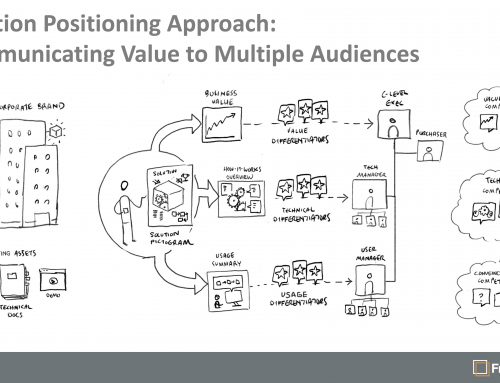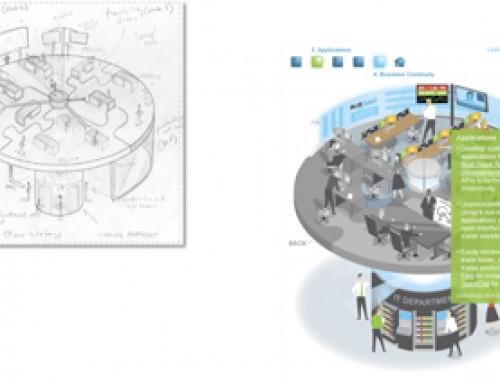My B2B Tech Marketing Background – A Struggle with Marketplace Engagement and Understanding
I started in engineering and then went to solution marketing working at IBM, JP Morgan, Exxon and a host of tech startups. My challenges were largely around getting my audience to understand the point of our offerings. The solutions were typically technical and nuanced and the audiences were not only prospects and clients – but also our employees and our partners.
Like everyone, I relied on graphic design and branded stock images and text leveraging either an in-house team or an external agency. But the results were almost always underwhelming. We simply could not convey the point and value of these technology offerings to our business audience.
Looking back it seems obvious that we did not have the right approach or tools to explain our offerings. I constantly attended management meetings where we largely expressed our frustration to each other – we knew we had differentiated value – but our marketplace was not even getting the point of our offerings, let alone the value. As the head of marketing – that was not a happy place for me.

The Proverbial Executives Shaking Hand Stock Photo
Two Epiphanies
And then I noticed two things.
When we were coming up with innovative solutions, all of our engineers and product owners would invariably go to the whiteboard to sketch out the vision and the point of the offering. They would vigorously debate what exactly is the vision and the point and iterate the sketches on the whiteboard until they came to an agreement.
But none – yes none – of that ideation and whiteboard concept sketching ever made it to our solution marketing communications programs.
Instead, we went back to concerns about the brand and selecting stock images and applying graphic design to make the content look “professional”. We also came up with clever tag lines and lots and lots of body text.
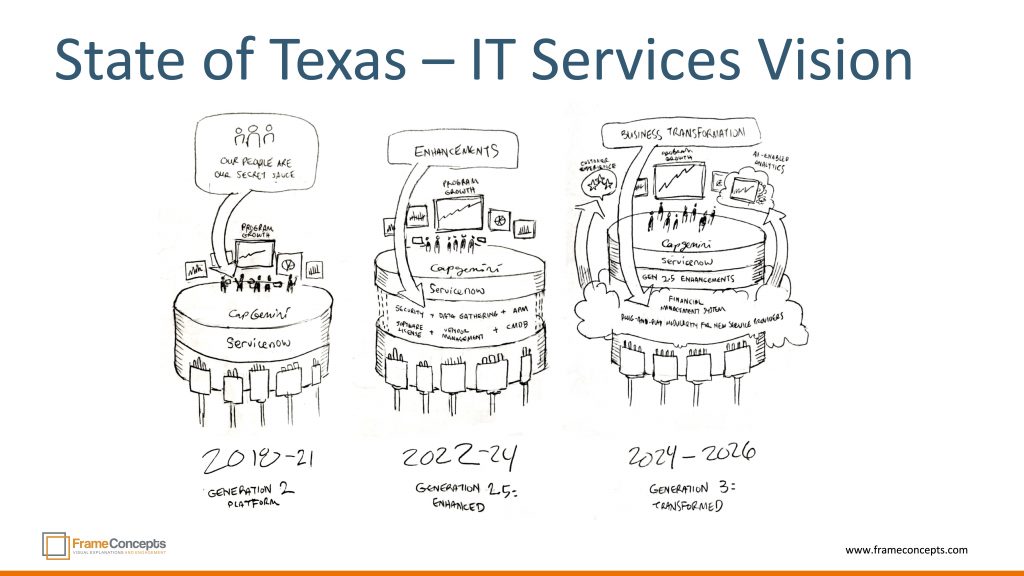
The Type of Whiteboard Sketch Ideation that one SHOULD include in their Solution Marketing Content
Epiphany 2
My second epiphany occurred while working for an early-stage startup that had a viable tech solution in financial services in concept but no customers. We could not bring a beta customer on board largely because they did not understand the point of the solution – even after we flew our entire management team and presented it to them.
It just so happened we had lunch with an artist from Time magazine who would typically create illustrations and flow diagrams and stick people to explain technical things – like how a GPS system worked – to their magazine reader. Over lunch, we asked him to sketch out on a napkin, (yes the proverbial napkin), the point of our solution. While talking to him about the solution and correcting him as he drew, I noticed a number of things.
The Flexibility and the Explanatory Power of the Sketch
I noticed that he quickly scratched out and penciled over what he had done as he iterated on the napkin. And I noticed that we felt comfortable asking him to change it. And I noticed that we noticed that the sketch was becoming more powerful than our words as we iterated together – certainly more powerful than the hundreds of slick PowerPoint slides we had developed. At the end, he went over the whole sketch with a dark line tracing all the features that we had agreed on. All of us now had in hand a solution explanation we embraced and liked and were excited about.
The sketch was so simple – yet so clear. It explained how the solution worked and how it delivered business value. It showed the point. So we scanned it and placed it as the intro slide in our beta customer powerpoint presentation. Now while presenting, the audience not only got it, but referenced the sketch while gesturing to it asking questions how it would work within their context. They became immersed in the solution. Very soon after that we had our first beta client.
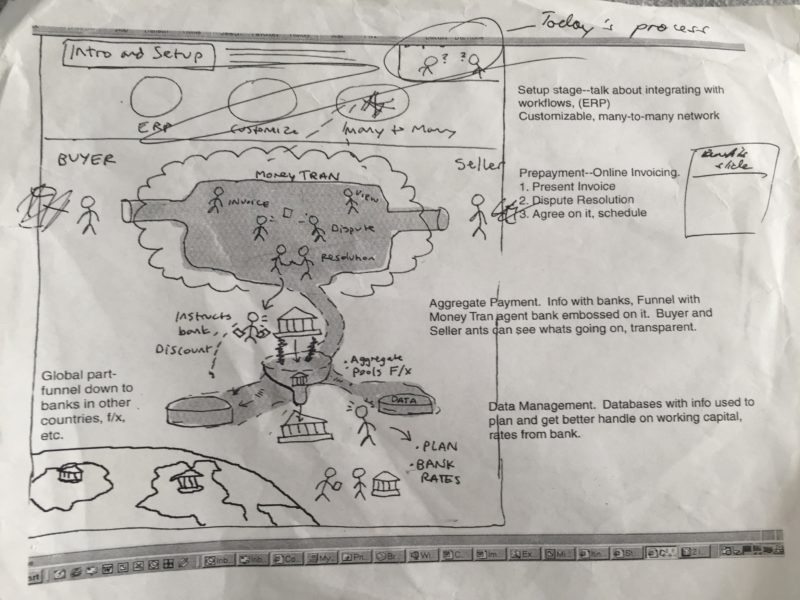
“The Napkin Sketch” – My First Sketch Exposure
Productizing Custom Visual Solutions
I went on my own and founded Frame Concepts in 2010 to offer to clients (clients like me), custom visual solutions for their B2B marketing needs. Every project starts off with hand-drawn pencil sketches that we iterate on with the client until we get it right. And then it is rendered into client-specific brand and transformed to a static illustration or an animation or an interactive pictogram or all of the above. Each of these are integrated into the go-to-marketing program kit – sales presentation, interactive demo, solution brochures, website, blogs and social sites, YouTube videos, webinar presentations, interactive eBooks, trade show signage and interactive kiosks, interactive pre-sales decision tools and ROI calculators – any content format our clients use, are enabled with our custom visuals.
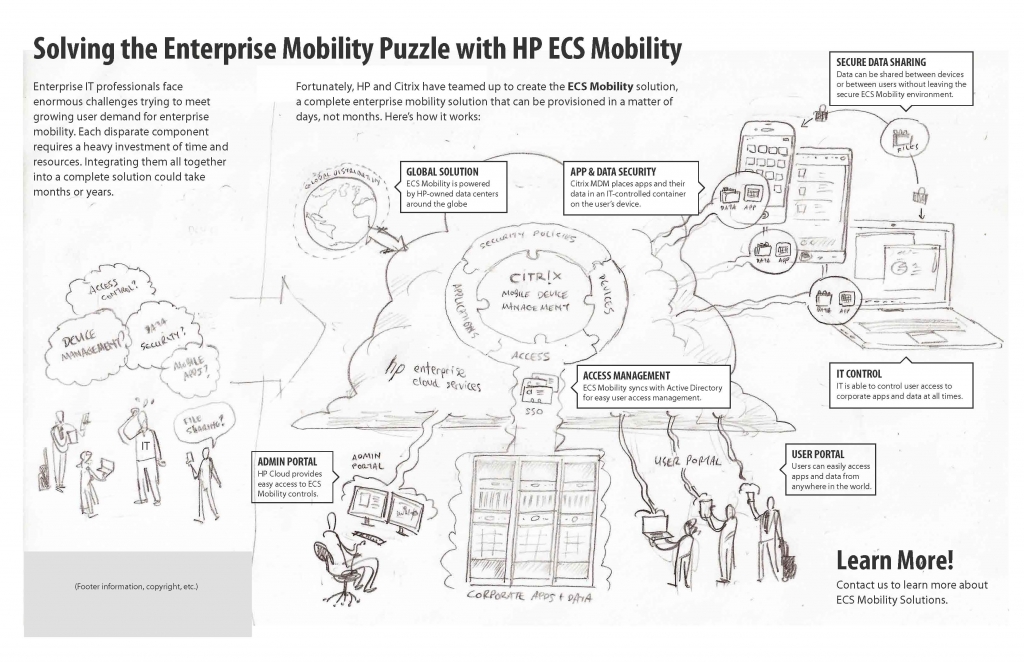
Ideating on the Point and Value of a Partnered Solution
And while every one of these content tools will have client-specific branding applied when rendered – the star of the show – the feature that’s doing all the explanatory and audience engagement work – is the pencil sketch-generated visual.
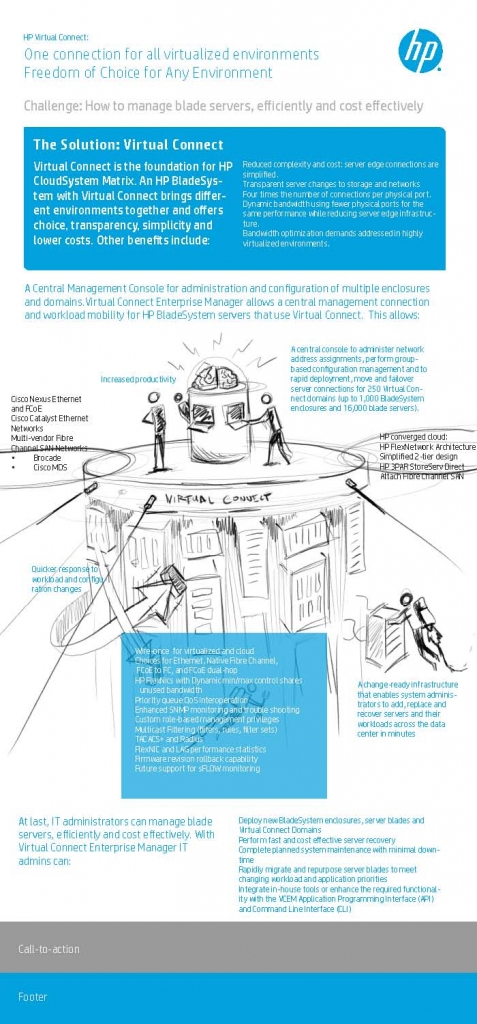
Leveraging Sketching for Client Brochure and Website Content
No Going Back
Reflecting back and comparing these custom visuals to traditional graphic design and branded stock images – it’s not even a fair fight. How could force-fitted branded images with text compete against custom visuals created from scratch by a professional illustrator and information designer? How could pages and pages of text be as engaging as an impactful solution illustration?
Once you get onboard with custom visuals, you will become understandably very uncomfortable trying to leverage branded stock images and text alone to explain the nuance and point of your offerings. You will still want the final output to be on brand but your priority will now become engaging your audience with the point and value of unique your solution and approach.
Now the initial instinct will not be to reach out to your brand department but to an Information Designer and Illustrator. You and your stake-holders will want to get to that “ah-hah”-moment first though sketch iteration. The concern – and rightfully so – is not primarily to look slick, but that your audience gets it and is engaged. Being on brand and slickness will easily follow once you get the visual concept right. The paradigm has shifted – nailing the concept sketch first, brand second.
There is no going back.
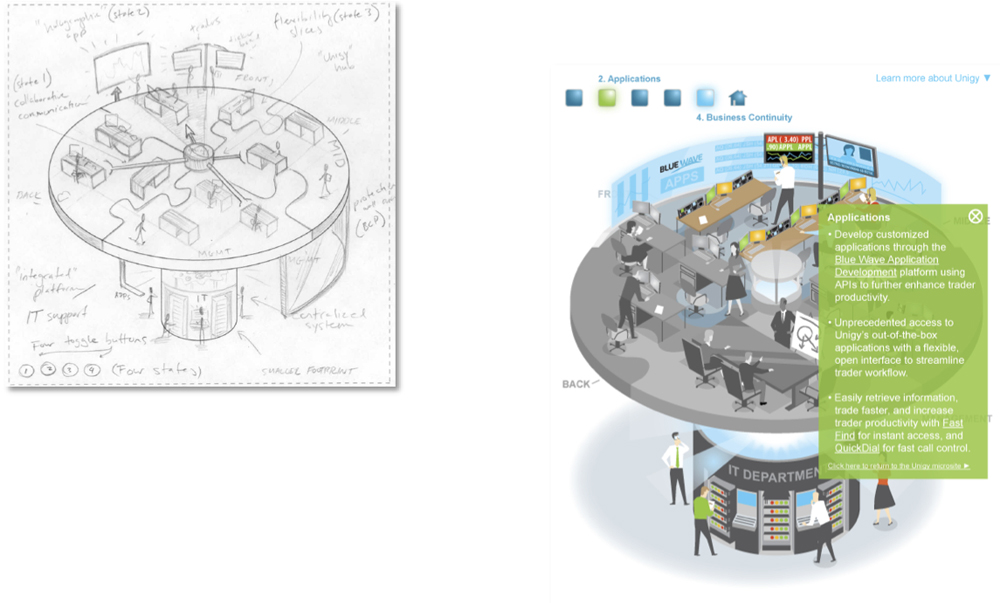
From Ideation Sketch to Rendered Interactive Solution Pictogram



